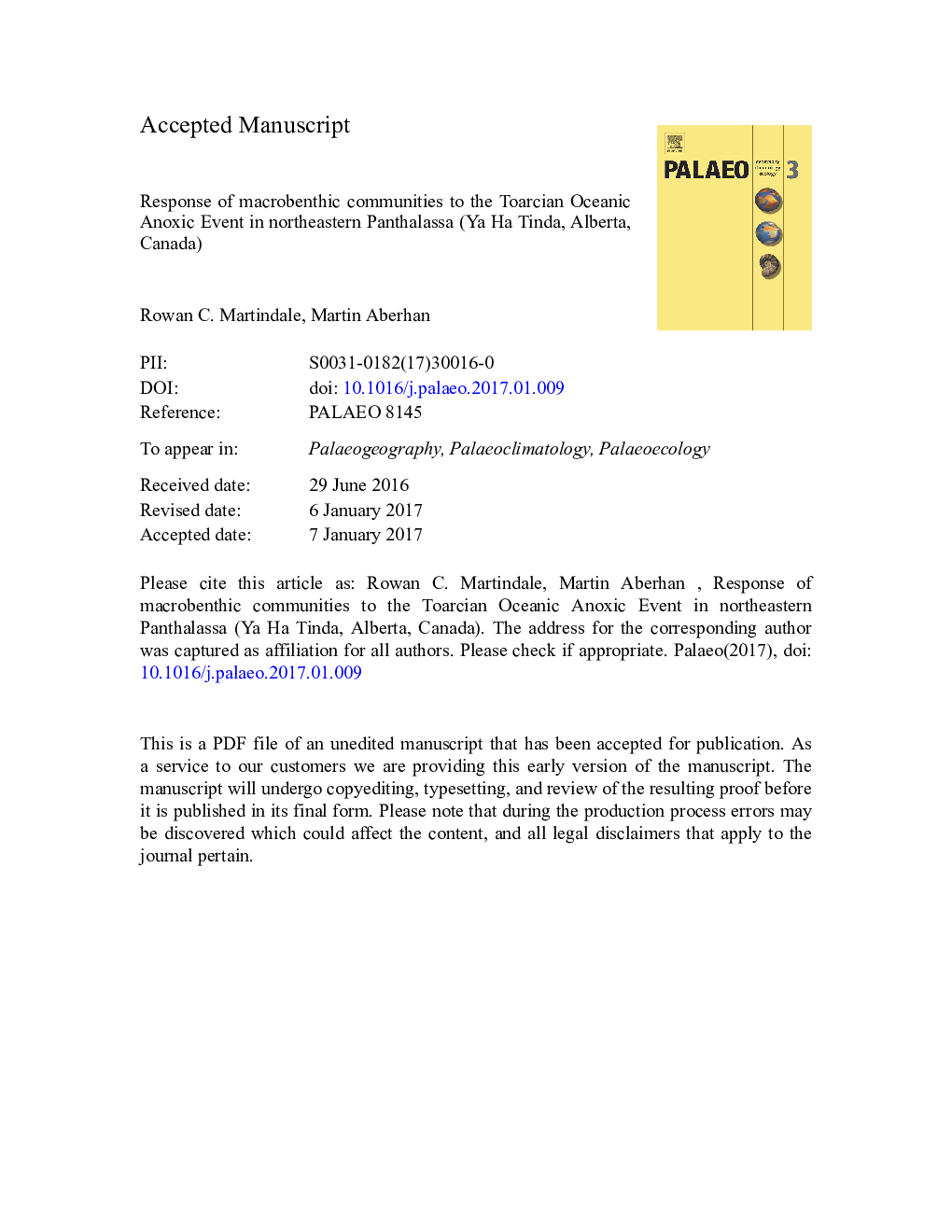| Article ID | Journal | Published Year | Pages | File Type |
|---|---|---|---|---|
| 5755822 | Palaeogeography, Palaeoclimatology, Palaeoecology | 2017 | 72 Pages |
Abstract
At Ya Ha Tinda, the initiation of the carbon isotope excursion that occurred during the Toarcian Oceanic Anoxic Event (T-OAE) is coincident with major faunal change. The pre-T-OAE community is composed of large epifaunal suspension-feeders (bivalves and brachiopods), lobsters, crinoids, and burrowing organisms represented as trace fossils. The onset of the isotope excursion coincided with a wholesale turnover of bivalve and brachiopod genera as well as with a significant diminution in body size of the community members as a whole. The intra-T-OAE community largely consisted of opportunistic, low-oxygen-tolerant benthic taxa that colonized the seafloor periodically along with some facultatively pseudoplanktonic taxa. Unlike the contemporary deposits in Europe, there is no sign of recovery at Ya Ha Tinda in the middle Toarcian Planulata Ammonite Zone; abundance, richness, and functional diversity of benthic taxa remained extremely low and the size of community members remained small. The primary stress on this system is interpreted to have been oxygen limitation. The minimal ecological effect on the benthic community at the Pliensbachian-Toarcian stage boundary and delayed recovery from the T-OAE of the benthos are in marked contrast to the pelagic record from northeastern Panthalassa. This suggests a decoupling of the benthic and pelagic communities in this region during the Early Jurassic.
Related Topics
Physical Sciences and Engineering
Earth and Planetary Sciences
Earth-Surface Processes
Authors
Rowan C. Martindale, Martin Aberhan,
